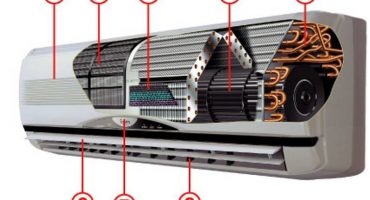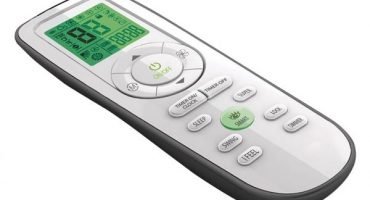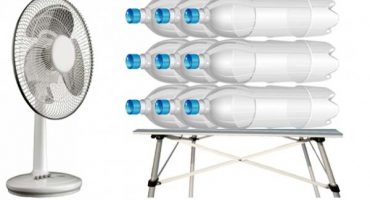All devices of the evaporative type, including air conditioning, work based on the physical properties of the gas - with a sharp expansion, cool your volume. Such a process takes place in an evaporation chamber, the purpose of which is to cool the air.
But when cooling, another law of physics comes into force called "reaching the growth point." In simple words, it looks like the appearance of small dew drops on a chilled surface, these droplets are called condensate.
In fact, they can be called a by-product of the functioning of the equipment, and for the normal operation of the device it needs the timely removal of condensate from the refrigeration systems.
Where does condensate come from and where does it go
Condensate is a drop of water. Since the device of the air conditioner is a difficult electrical connection and circuit, in some cases, excessive humidity causes a malfunction or breakdown, and if the device is connected to the network, there is a possibility of a short circuit.
In one day, average household air conditioners can collect up to 10-15 liters of liquid that is in the atmosphere. And if there are many air conditioners installed, for example, in office buildings, hundreds of liters of condensate can accumulate per day. Such a volume is dangerous due to the risk of flooding.
It also affects health. Wastewater is a good medium for the reproduction of bacteria and molds that are dangerous for humans.
These items are enough to make a decision to install a special drainage for the air conditioner to drain. The main task of which is the removal of excess condensate from equipment.
Health effects
The main danger of condensate is far from the risk of flooding something or breakdowns of equipment, it is a threat to health. If the device has several components for the comfortable reproduction of bacteria, namely water, dirt and heat, all this creates the conditions for an incubator of dangerous diseases and other infections:
- The vile smell is the smallest of evils. This “aroma” serves as a warning that it is time to carry out a thorough cleaning of the drainage.
- Pathogenic bacteria - There is one type of bacteria that causes pneumonia. He is also called the "Legionnaire’s disease", the mortality rate from which is very high.
- Mold fungi - some types of fungi provoke diseases up to cancer.
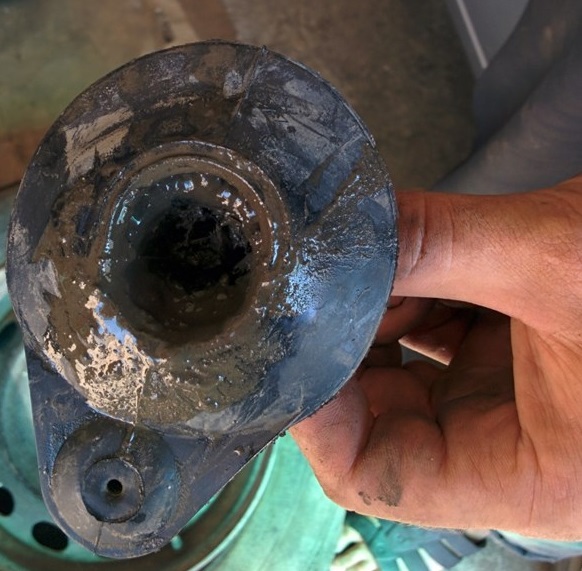
Drain pipe clogged
How to drain condensate from the air conditioner
After the information obtained above, the question arises of how to properly drain condensate from the air conditioner. A frequently used and financially advantageous way is to bring the drain pipe into the street by drilling a small hole in the wall. The main plus is simplicity - made a hole, extended a hose and everything works. But there is a negative side, it lies in the effect of "raindrops" that will fall on the windowsills and cause a lot of inconvenience to neighbors. The disadvantages include the aesthetic side. No matter how practical this method is, not everyone likes the pipes hanging from the apartment; on a bare wall.
It would be much better to use condensate drainage to the sewer.
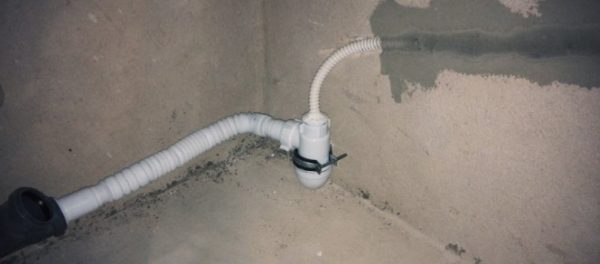
Drainage drainage
This option does not have any disadvantages. Air conditioning waste is discharged into a system designed for this purpose.This can be, like a common sewer channel, or a specially laid network of pipelines. All drains will be diverted without your help due to the inclination of the pipes.
But there are also subtleties to the implementation of such a condensate drain system from an air conditioner:
- To prevent the nasty smell from drains from entering the room, it is necessary to install a water lock - this is the curved part of the drainage pipe in the form of the letter S. The operation of such a shutter is similar to the work of a siphon - it creates a barrier to odors that come from below.
- If the air conditioner has been idle for a long time, the water trap can dry out and the air coming out of it will begin to discharge through the sewer system. To prevent this, it is enough to pour several liters of water into the drain once every 5-7 days.
- When using the option with gravity flow, it is necessary to accurately calculate the minimum diameter and inclination of the system so that all the waste from the air conditioner can flow freely along it.
Manufacturers usually attach a detailed diagram that facilitates the installation process.
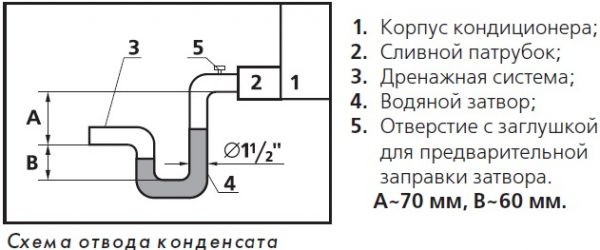
Condensate drain circuit
Drainage tubes for air conditioners
Drainage pipes from air conditioners belong to the drainage system and are represented in the market by two positions:
- Pipes made of polyvinyl chloride and polyethylene.
- The pipes are smooth and corrugated.
The first option is most often used if the drainage is small, in other cases corrugated systems are used. At the same time, the second variety has another huge advantage - it has excellent flexibility in the drain hose, which makes it unnecessary to use additional fasteners during installation, as is necessary when working with smooth pipes.

Drainage pipes for air conditioners
The installation process of the condensate drain system
Despite the difficult descriptions of actions, in practice the process of withdrawal is extremely simple and requires only care:
- The first thing to do is to remove the fasteners from the air conditioner, which are located below.
- A small container will be installed in the lower part under the fan to collect excess condensate. From its lateral side a pipe is visible, to it with the help of a clamp and we attach a drainage pipe of a branch.
- Next, collect and hold back air conditioner installation in place. But it is important that the tube passes through the hole in the side of the air conditioner.
Now you need to bring the previously connected hose to the sewer or to the street. If the hose is retracted correctly, you will see the first drops that come out of the pipe.

Street drainage pattern
Drainage system cleaning
In domestic conditions, without the help of a specialist, cleaning the drainage system can only be done if only the tub nozzle is dirty. To do this, you need:
- Unfasten the filter, which is located on the air conditioner housing and rinse it thoroughly.
- After removing the lower fasteners, disconnect the drainage tube and remove the bath.
- Flush these parts, paying particular attention to the holes.
Experts also recommend the use of disinfectants during the cleaning procedure, for example, a chlorhexidine solution.
For other failures associated with blockage of drainage, technical equipment is needed, it is better to call a master. Do-it-yourself repairs can damage expensive equipment.

